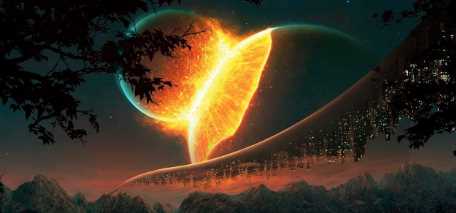An extraterrestrial named Klaatu and his robot sidekick Gort use their advanced alien technology to simultaneously shut down nearly all of the electronics on Earth in the 1951 movie The Day the Earth Stood Still. The world comes to an unsettling halt as televisions, factories, cars, and more all stop operating.
But what if the film took its own name more literally? Consider an alien with a more potent weapon, one that could actually halt Earth's progress and our planet's rotation. When Earth Stopped One Day Compared to the Hollywood original, Spinning would be a much more damaging film. Many of the most fundamental processes on Earth are supported by the rotation of our globe, even though we may not be aware of this.
Earth's stopping
It would be utterly devastating for a large portion of the planet's surface if Earth's rotation abruptly ceased. We're all rotating with the earth, even though we can't feel it; at the equator, this translates to a speed of about 1,000 miles per hour.
Everything perched on top of the globe would be sent flying eastward if the planet were to suddenly stop. Imagine everything being thrown sideways at hundreds of miles per hour, including people, houses, trees, stones, and more. High-speed winds would clean the land in the aftermath while still rotating almost as quickly as the globe.
The impacts would still be profound if there was a more gradual slowing, but they would take longer to manifest. The Sun no longer moves around the sky in a continuous circle throughout the course of a day, which is maybe the first thing we might notice. If the globe were stationary, the Sun would appear to be moving, making one day appear to last half a year. However, the Sun's apparent motion is caused by Earth's rotation (though we could look forward to some very long-lasting sunsets).
Biological circadian rhythms would be completely out of whack without the 24-hour days we're accustomed to. Regular variations in sunshine are necessary for the rhythmic cellular processes that signal our bodies when to sleep and wake up to run properly. Circadian rhythms play a crucial role in the lives of many animals on Earth, including bees and trees.
The rotation of the globe affects Earth's atmosphere as well. The direction of the air currents would shift significantly if the planet suddenly stopped rotating (once the 1,000 mph winds had died down). Around the world, rainfall and temperatures are greatly influenced by the wind patterns we currently observe. Any changes to air currents could cause deserts to emerge where trees currently grow or allow people to live on freezing tundra, for example.
As climate change changes the world's weather patterns, we are already witnessing something similar, albeit on a much smaller scale. For creatures that depend on certain habitats, the outcomes can be disastrous.Hurricanes would no longer exist on a spinning Earth. Coriolis forces resulting from the rotation of the globe produce enormous rotating storms.
The spiralling lines and centre eye that characterise a hurricane are the consequence of winds being drawn into the low pressure area of a developing storm and spinning in opposite directions in the northern and southern hemispheres. Cutting them out might be one of the few advantages of stopping the planet's spin as this process is one of the reasons why storms can get so violent.
The planets of everlasting day
Nobody has discovered a planet that doesn't revolve at all, as far as we know. All worlds spin from the beginning because rotation is a natural byproduct of the processes that create planets and other celestial bodies. However, certain planets exhibit what astronomers call tidal locking, when they appear to be stationary.
There are perpetually night and day sides on these planets since they always present the same face to their star. A planet's rotational speed can be gradually slowed down until it exactly fits its orbital period by gravitational interactions with its star. A nice illustration of tidal locking is the Moon.
Because the Moon is tidally locked to Earth, we can only view one side of it no matter where in the sky it is or what phase it is in. Many exoplanets, especially those near their stars where the gravitational pull is strongest, are likely to experience the same condition.
Some scientists have hypothesised that life might yet find a way to these planets despite how harsh they may appear to be—frozen on one side and cooked on the other. The twilight zone of tidally locked worlds, close to where day transitions to night, is where some astronomers believe extraterrestrial life could find a happy medium.




Leave Comment